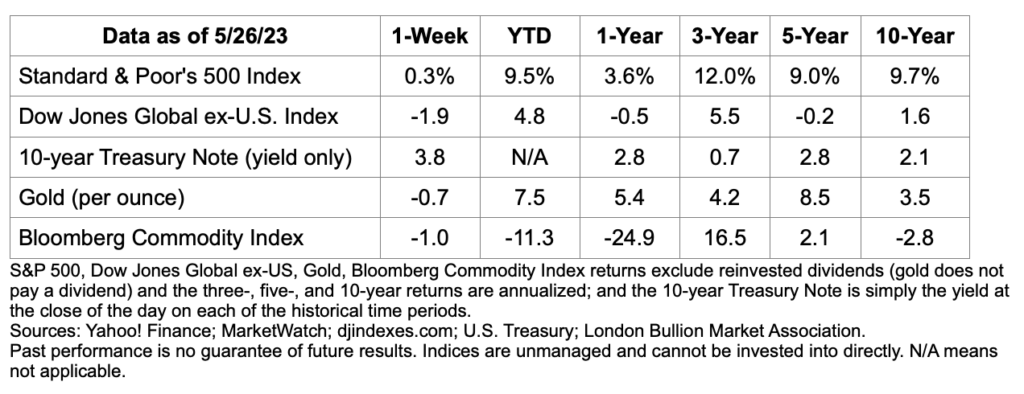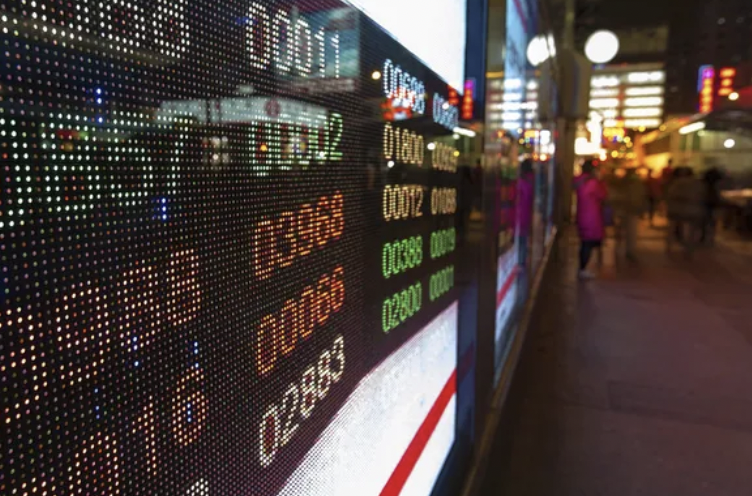It’s a three-ring circus!
For centuries people have embraced the circus. Enjoying the sticky fluff of cotton candy while elephants, clowns and trapeze artists perform in the spotlights. Merriam Webster Dictionary defines the experience as wild, confusing, engrossing and entertaining.
Some aspects of that description apply to recent financial market activity. Last week, we saw:
Inflation flying above the Federal Reserve (Fed)’s target. Inflation re-entered the limelight last week. The Personal Consumption Expenditures (PCE) Index, one of the Fed’s favorite inflation gauges, showed that inflation rose in April along with consumer spending. That was unwelcome news for investors who hoped the Fed would leave the federal funds rate unchanged at its June meeting and, possibly, begin to lower rates later this year. By the end of last week, trading suggested there was a strong chance the Fed would raise rates in June, reported Jeff Cox of CNBC.
Artificial Intelligence (AI) drawing crowds. The thrill of AI has attracted investors and lifted stock markets higher this year. “Some stocks seen as AI winners – such as semiconductor makers and software developers – have more than doubled in value as traders bet on massive growth in the industry, even as fears mount over waves of job losses as everyday tasks become automated,” reported Graeme Wearden of The Guardian. Opinions vary about whether the rally is sustainable.
The debt ceiling barreling toward the center ring. Negotiators have reached a tentative agreement that would prevent a debt-ceiling default. Now, the agreement must be accepted by Congress, reported Steve Holland, Gram Slattery and Katharine Jackson of Reuters. No one is certain what will happen if Congress doesn’t accept the deal. Natalie Sherman of the BBC reported, “[A U.S. default] has never happened before so it is not entirely clear…The government would no longer be able to pay the salaries of federal and military employees, and Social Security [checks] – payments that millions of pensioners in the U.S. rely on – would stop. Companies and charities that count on government funds would be in peril.”
With so many issues vying for attention, what should investors do? The answer is more straightforward than you might imagine: focus on their financial goals. The weight of evidence accumulated over time supports the idea that holding a well-allocated and diversified portfolio built to meet your financial goals is a sound choice. While past performance is no guarantee of future results, financial markets have weathered a variety of calamitous events – including world wars – and come through.
Last week, the Standard & Poor’s 500 Index and Nasdaq Composite gained, while the Dow Jones Industrial Average lost ground, according to Barron’s. Yields on most maturities of U.S. Treasuries finished the week higher.

What Do You Know About Innovation?
Innovation is powerful. When new technologies take hold, they can revolutionize products, practices and industries, making older technologies obsolete. As a result, companies must adapt to remain competitive or disappear.
In economics, this concept is called creative destruction. It was introduced by economist Joseph Schumpeter in 1942. In his book, Capitalism, Socialism and Democracy, Schumpeter explained that
the cycle of obsolescence and renewal is an essential aspect of capitalism that drives economic growth. See what you know about innovation and creative destruction by taking this brief quiz.
Investors are enthusiastic about an innovation that has helped drive stock market returns higher this year. What is it?
A) Vertical farming
B) Air taxis
C) Artificial intelligence
D) Quantum computing
One innovation resulting from the COVID-19 pandemic was remote work. How did this affect the economy?
A) Demand for office space fell
B) Employment among workers with disabilities rose
C) Hotel stays lengthened as people combined business and leisure
D) All of the above
The World Intellectual Property Organization’s Global Innovation Index identifies the most innovative economies in the world. In 2022, which country was the most innovative? (This country has led the pack for a dozen years.)
A) Switzerland
B) United States
C) Sweden
D) United Kingdom
Which of the following innovations resulted in creative destruction?
A) Streaming services
B) Assembly lines
C) E-commerce
D) All of the above
“They say I’m old-fashioned, and live in the past, but sometimes I think progress progresses too fast!”
—Dr. Seuss, author
Answers: 1) c; 2) d; 3) a; 4) d
Investment advisory services offered through Keystone Financial Services, an SEC Registered Investment Advisor. These views are those of Carson Coaching, not the presenting Representative, the Representative’s Broker/Dealer, or Registered Investment Advisor, and should not be construed as investment advice. This newsletter was prepared by Carson Coaching. Carson Coaching is not affiliated with the named firm or broker/dealer. Government bonds and Treasury Bills are guaranteed by the U.S. government as to the timely payment of principal and interest and, if held to maturity, offer a fixed rate of return and fixed principal value. However, the value of fund shares is not guaranteed and will fluctuate. Corporate bonds are considered higher risk than government bonds but normally offer a higher yield and are subject to market, interest rate and credit risk as well as additional risks based on the quality of issuer coupon rate, price, yield, maturity, and redemption features. The Standard & Poor’s 500 (S&P 500) is an unmanaged group of securities considered to be representative of the stock market in general. You cannot invest directly in this index. All indexes referenced are unmanaged. The volatility of indexes could be materially different from that of a client’s portfolio. Unmanaged index returns do not reflect fees, expenses, or sales charges. Index performance is not indicative of the performance of any investment. You cannot invest directly in an index. The Dow Jones Global ex-U.S. Index covers approximately 95% of the market capitalization of the 45 developed and emerging countries included in the Index. The 10-year Treasury Note represents debt owed by the United States Treasury to the public. Since the U.S. Government is seen as a risk-free borrower, investors use the 10-year Treasury Note as a benchmark for the long-term bond market. Gold represents the 3:00 p.m. (London time) gold price as reported by the London Bullion Market Association and is expressed in U.S. Dollars per fine troy ounce. The source for gold data is Federal Reserve Bank of St. Louis (FRED), https://fred.stlouisfed.org/series/GOLDPMGBD228NLBM. The Bloomberg Commodity Index is designed to be a highly liquid and diversified benchmark for the commodity futures market. The Index is composed of futures contracts on 19 physical commodities and was launched on July 14, 1998. The DJ Equity All REIT Total Return Index measures the total return performance of the equity subcategory of the Real Estate Investment Trust (REIT) industry as calculated by Dow Jones. The Dow Jones Industrial Average (DJIA), commonly known as “The Dow,” is an index representing 30 stock of companies maintained and reviewed by the editors of The Wall Street Journal. The NASDAQ Composite is an unmanaged index of securities traded on the NASDAQ system. International investing involves special risks such as currency fluctuation and political instability and may not be suitable for all investors. These risks are often heightened for investments in emerging markets. Yahoo! Finance is the source for any reference to the performance of an index between two specific periods. The risk of loss in trading commodities and futures can be substantial. You should therefore carefully consider whether such trading is suitable for you in light of your financial condition. The high degree of leverage is often obtainable in commodity trading and can work against you as well as for you. The use of leverage can lead to large losses as well as gains. Opinions expressed are subject to change without notice and are not intended as investment advice or to predict future performance. Economic forecasts set forth may not develop as predicted and there can be no guarantee that strategies promoted will be successful. Past performance does not guarantee future results. Investing involves risk, including loss of principal. The foregoing information has been obtained from sources considered to be reliable, but we do not guarantee it is accurate or complete. There is no guarantee a diversified portfolio will enhance overall returns or outperform a non-diversified portfolio. Diversification does not protect against market risk. Asset allocation does not ensure a profit or protect against a loss. Consult your financial professional before making any investment decision. Please contact our office if you would like a list of sources used in creating this content.
